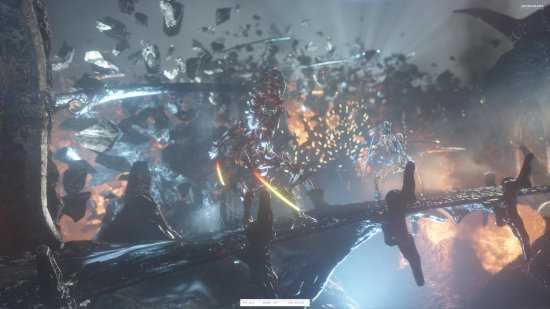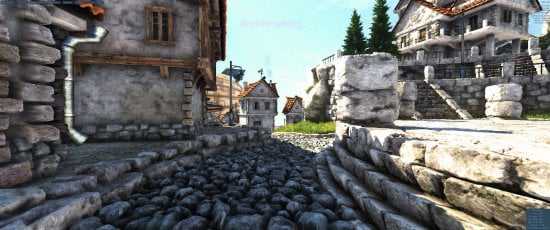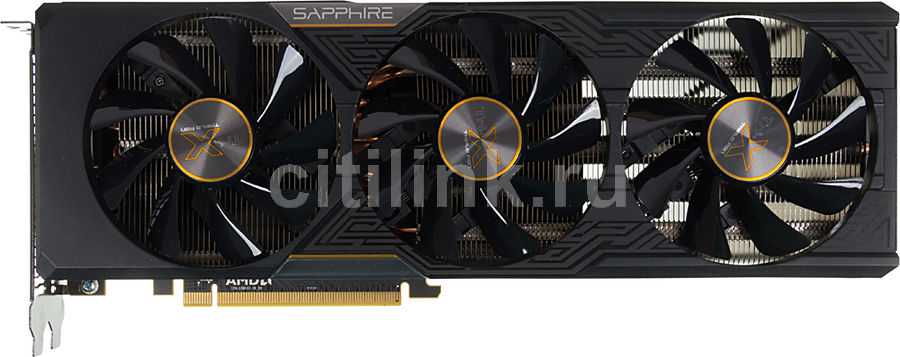Benchmarks — 3440×1440
3440×1440 Benchmarks
Rise of the Tomb Raider is one of the best looking games on the market, a truly gorgeous game — and a wonder to benchmark. The team at Crystal Dynamics made a very scalable PC game that plays really well testing graphics cards. We’ve got DX11 and DX12 results in one here, showing the slight strengths of running DX12 mode.
Middle-earth: Shadow of War is a sequel to the popular Shadow of Mordor, which was powered by the Lithtech engine. When cranked up to maximum detail, it will chew through your GPU and its VRAM like it’s nothing.
You can buy Middle-earth: Shadow of War at Amazon.
Metro: Last Light Redux comes from developer 4A Games, making the Redux version of Metro: Last Light the ‘definitive’ version of the game. Redux had a fresh coat of paint on the already impressive 4A Engine, and it really pushes our GPUs to their limits.
You can buy Metro: Last Light Redux at Amazon.
Benchmarks — Synthetic
3DMark Fire Strike — 1080p

3DMark has been a staple benchmark for years now, all the way back to when The Matrix was released and Futuremark had bullet time inspired benchmarks. 3DMark is the perfect tool to see if your system — most important, your CPU and GPU — is performing as it should. You can search results for your GPU, to see if it falls in line with other systems based on similar hardware.
3DMark Fire Strike — 1440p
3DMark has been a staple benchmark for years now, all the way back to when The Matrix was released and Futuremark had bullet time inspired benchmarks. 3DMark is the perfect tool to see if your system — most important, your CPU and GPU — is performing as it should. You can search results for your GPU, to see if it falls in line with other systems based on similar hardware.
3DMark Fire Strike — 4K
3DMark has been a staple benchmark for years now, all the way back to when The Matrix was released and Futuremark had bullet time inspired benchmarks. 3DMark is the perfect tool to see if your system — most important, your CPU and GPU — is performing as it should. You can search results for your GPU, to see if it falls in line with other systems based on similar hardware.
Heaven — 1080p

Heaven is an intensive GPU benchmark that really pushes your silicon to its limits. It’s another favorite of ours as it has some great scaling for multi-GPU testing, and it’s great for getting your GPU to 100% for power and noise testing.
Benchmarks — 1440p
1440p Benchmarks
Rise of the Tomb Raider is one of the best looking games on the market, a truly gorgeous game — and a wonder to benchmark. The team at Crystal Dynamics made a very scalable PC game that plays really well testing graphics cards. We’ve got DX11 and DX12 results in one here, showing the slight strengths of running DX12 mode.
Middle-earth: Shadow of War is a sequel to the popular Shadow of Mordor, which was powered by the Lithtech engine. When cranked up to maximum detail, it will chew through your GPU and its VRAM like it’s nothing.
You can buy Middle-earth: Shadow of War at Amazon.
Metro: Last Light Redux comes from developer 4A Games, making the Redux version of Metro: Last Light the ‘definitive’ version of the game. Redux had a fresh coat of paint on the already impressive 4A Engine, and it really pushes our GPUs to their limits.
You can buy Metro: Last Light Redux at Amazon.
Power & Temps
Power & Temps
I thought the SAPPHIRE Radeon RX Vega 64 NITRO+ would consume more power, but even with the HBM2 clocked at 1100MHz (up from 945MHz) and mining Ethereum, the entire system was drawing 390W.
390W of power consumption for the entire system is still a lot, considering NVIDIA’s faster (and yet 18 month old) GeForce GTX 1080 has a single 8-pin PCIe power connector, and consumes less than 260W in our test system.
As for temps, with Ethereum mining pushing the card to 100% the RX Vega 64 NITRO+ was only hitting a maximum of 70C. This is impressive considering the air-cooled Radeon RX Vega 64 reference card from AMD hits a maximum of 80C and is a hell of a lot louder in the process.
SAPPHIRE has done some truly great work with the cooling technology on the card to keep both the Vega 10 GPU and HBM2 cool, without making a huge fuss out of the noise from the fans. Kudos, SAPPHIRE.
Game & Mining Performance
Performance Analysis
If we are comparing the Radeon RX Vega 64 NITRO+ against its closest competitors in the market, we’re looking at the GeForce GTX 1080 and not the GeForce GTX 1080 Ti. The higher-end GTX 1080 Ti is not only much more powerful, it’s more expensive than the RX Vega 64 NITRO+. Another factor is that if you’re spending the money on the RX Vega 64 NITRO+ you’ll really want to couple it with a cheaper FreeSync-enabled gaming display.
Going the route of the GeForce GTX 1080 Ti is much more expensive when you consider monitors are $100-$300+ more expensive when compared to their FreeSync counterparts. It’s a nice chunk of cash you can save that you can put into a better CPU (Core i7-8700K or even Ryzen 7 1800X for example), or a faster/larger M.2 SSD or better cooling for your CPU so you can overclock it.
The SAPPHIRE Radeon RX Vega 64 NITRO+ performs about as good, but sometimes worse, than NVIDIA’s reference GeForce GTX 1080 at 1080p. In games like Rise of the Tomb Raider we can enjoy the best graphics on offer, and still reach 111FPS average (compared to 116FPS on the GTX 1080 FE).
In newer games like Middle-earth: Shadow of War, we’re looking at 96FPS average at 1080p just a single FPS drop the RX Vega 64 LCE and 1FPS faster than the GTX 1080 FE.
Ethereum Mining Performance
From now on we’ll be taking a look at the performance of Ethereum mining in all of our new graphics card reviews, with the new SAPPHIRE Radeon RX Vega 64 NITRO+ being the first to receive these new benchmark figures.
I was able to get the 8GB of HBM2 on the card up to 1100MHz, the same frequency as every other RX Vega 64 that I’ve tested so far (RX Vega 64 air-cooled, RX Vega 64 LCE, and the ASUS ROG Strix variant). With the HBM2 at 1100MHz, we had Ethereum mining performance of 37MH/s. Not quite the 82MH/s that the new TITAN V is capable of, but that’s a $2999 card.
Detailed Look
The box for the SAPPHIRE Radeon RX Vega 64 NITRO+ Limited Edition is a little plain for my liking, especially for this being the flagship Radeon RX Vega from SAPPHIRE, and a Limited Edition variant.
Once it’s out of the box, all those feelings disappear as it’s one of the best-looking Radeon RX Vega graphics cards on the market.
The card looks great, but it’s also thick.
SAPPHIRE’s new RX Vega 64 NITRO+ requires a huge triple 8-pin PCIe power connectors.
The backplate looks great, with SAPPHIRE using their NITRO branding on the back and the NITRO logo at the end.
When I said the card was thick, I wasn’t joking — check out this heat sink.
Display connectivity wise we have 2 x DP and 2 x HDMI.
Benchmarks — 1080p
1080p Benchmarks
Rise of the Tomb Raider is one of the best looking games on the market, a truly gorgeous game — and a wonder to benchmark. The team at Crystal Dynamics made a very scalable PC game that plays really well testing graphics cards. We’ve got DX11 and DX12 results in one here, showing the slight strengths of running DX12 mode.
Middle-earth: Shadow of War is a sequel to the popular Shadow of Mordor, which was powered by the Lithtech engine. When cranked up to maximum detail, it will chew through your GPU and its VRAM like it’s nothing.
You can buy Middle-earth: Shadow of War at Amazon.
Metro: Last Light Redux comes from developer 4A Games, making the Redux version of Metro: Last Light the ‘definitive’ version of the game. Redux had a fresh coat of paint on the already impressive 4A Engine, and it really pushes our GPUs to their limits.
You can buy Metro: Last Light Redux at Amazon.
Cooling Tech
Enhanced TRI-X Cooling
SAPPHIRE is using something they’re calling ‘enhanced TRI-X cooling’ which packs double ball bearing fans, black diamond chokes, and SAPPHIRE’s staple vapor chamber technology.
There’s also a bunch of BOOST-powered technologies on the RX Vega 64 NITRO+ with NITRO Boost overclocking, NITRO Quick Connect Fans (so useful!), NITRO Intelligent Fan Control III, and the beautiful NITRO Glow RGB LED indicators on the back of the card.
SAPPHIRE uses an elaborate and chunky 3-slot card with a triple-fan cooler that as we explained above, is the ‘enhanced TRI-X cooler’.
As for the cooler design, we have a triple-fan cooler with the left and right fans spinning in an anti-clockwise direction while the middle fan runs clockwise. SAPPHIRE has used dual ball bearing fans, while there’s 4 heat pipes running through the card that keep it surprisingly cool — especially when compared to the reference Radeon RX Vega 64 from AMD.
Detailed Specs
SAPPHIRE is tapping AMD’s latest Vega 10 GPU which is made on the third-gen FinFET 14nm process, as well as the 8GB of next-gen HBM2 memory technology. There’s additional overclocking headroom on the Limited Edition variants of the new SAPPHIRE RX Vega 64 NITRO+ graphics cards, something we’ll be testing out later in the review.
We have 4096 stream processors alongside 64 NCUs powered by the Vega architecture, joined by 8GB of HBM2 memory and HBCC technology., he 8GB of HBM2 is on a 2048-bit memory bus.
The card itself is a 3-slot beast that requires 8+8+8-pin PCIe power connectors (yes, three 8-pin PCIe) and is pretty hefty at 310 x 133 x 54cm. There’s a custom PCB with 14-phase VDDC, and SAPPHIRE’s new enhanced TRI-X cooling and ‘robust’ VRM cooling.
Dual BIOS — NITRO Boost By Default
SAPPHIRE provides two BIOSes on the Radeon RX Vega 64 NITRO+ Limited Edition, with the NITRO+ Boost BIOS clocking the GPU at 1423/1611MHz for base and boost, respectively. The other efficient BIOS clocks the GPU down to 1273/1529MHz, which would be perfect for cryptocurrency mining as the card doesn’t reduce HBM2 clocks down from 945MHz.
Final Thoughts
SAPPHIRE has built the best Radeon RX Vega graphics card bar none, including the ASUS ROG Strix variant and even AMD’s own Radeon RX Vega 64 Liquid Cooled Edition. The LCE version is great and all, but it’s still a huge watercooler compared to the stock triple-cooler on the new NITRO+ card from SAPPHIRE.
Even with the RX Vega 64 NITRO+ mining Ethereum, we had a maximum of 70C. Now this might sound like a lot, but the liquid cooled variant from AMD was running at 65C in an air conditioned room, while the air-cooled RX Vega 64 (the worst of them all, and the loudest by far) was running at 79-80C.
SAPPHIRE’s card is a work of art throughout the entire process while under load, with its fans barely making any noise — and silent when next to the air-cooled RX Vega 64. With the fans manually cranked to 100% you can begin to hear them but again, when compared to the air-cooled RX Vega 64 it’s not a problem.
You’ll never need them at 100% in anything you do, unless you’re overclocking the card to the limit — and even then, the triple-fan, 3-slot cooler is good enough to handle it.
Introduction
SAPPHIRE is the brand of choice when it comes to the best custom Radeon graphics cards made, so when the company reached out to me asking if I would like to review their first custom Radeon RX Vega 64 graphics card, I of course jumped at the opportunity.
VIEW GALLERY — 39 IMAGES
SAPPHIRE’s new Radeon RX Vega 64 NITRO+ Limited Edition is the company’s new flagship Radeon RX Vega graphics card, packing their next generation cooler: Turbine-X. Vega is a hot monster as it is, so I’m looking forward to seeing how that new ‘enhanced TRI-X cooling’ keeps not just the Vega 10 NCU cool, but the 8GB of HBM2 that also runs incredibly hot.
The card is being launched right now, with the card available in most markets around the world that sell SAPPHIRE products. As for the price, we’re looking at $659 for the SAPPHIRE Radeon RX Vega 64 NITRO+ and $569 for the RX Vega 56 variant.
Benchmarks — 4K
4K Benchmarks
Rise of the Tomb Raider is one of the best looking games on the market, a truly gorgeous game — and a wonder to benchmark. The team at Crystal Dynamics made a very scalable PC game that plays really well testing graphics cards. We’ve got DX11 and DX12 results in one here, showing the slight strengths of running DX12 mode.
Middle-earth: Shadow of War is a sequel to the popular Shadow of Mordor, which was powered by the Lithtech engine. When cranked up to maximum detail, it will chew through your GPU and its VRAM like it’s nothing.
You can buy Middle-earth: Shadow of War at Amazon.
Metro: Last Light Redux comes from developer 4A Games, making the Redux version of Metro: Last Light the ‘definitive’ version of the game. Redux had a fresh coat of paint on the already impressive 4A Engine, and it really pushes our GPUs to their limits.
You can buy Metro: Last Light Redux at Amazon.




























